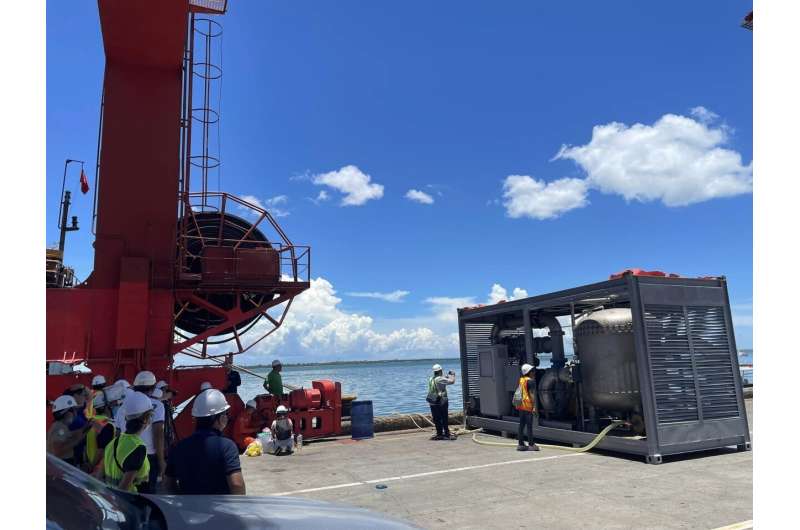This article has been reviewed according to Science X's editorial process and policies. Editors have highlighted the following attributes while ensuring the content's credibility:
fact-checked
proofread
Scientists develop cheaper method to sterilize ballast water

Filipino scientists have developed a low-cost method of sterilizing ballast water to help prevent the risk of spreading potentially invasive species from port to port.
Ballast water is pumped into ships or released to maintain stability by acting as a counterweight to cargo loaded into the holds. When released, the water may carry with it bacteria, microbes, plankton, larvae, and other invasive aquatic species, which compete with native organisms for resources and affect local habitats.
Invasive species can have serious impacts on human health, native species and local economies. For instance, consumption of shellfish contaminated by toxic algae—some species of which are transferred to new areas in ballast water—can cause severe illness and death.
The prototype of the sterilizing system uses a combination of ultraviolet rays and mechanical methods to reduce the number of invasive species in ballast water.
According to Benjamin Vallejo, Jr., marine biology professor at the Institute of Environmental Science and Meteorology, University of the Philippine Diliman, and part of the team of scientists that developed the system, it is significantly cheaper than other available methods.
"The [Philippine] model costs US$300,000, as compared to US$1 million to 5 million in the market," Vallejo tells SciDev.Net.
Shipping is vital to intercontinental trade and over 50,000 merchant ships ply international waters, according to the International Chamber of Shipping.
Ships releasing untreated ballast water are a major threat to ecological and economic well-being, says the International Maritime Organization (IMO).
The biological invasion of parts of South-East Asia by Mytella strigata, an invasive mussel species native to the Western Atlantic, costs the Luzon aquaculture industry in the Philippines about PHP300 million (US$5.4 million) a year.
In 2004, the International Convention for the Control and Management of Ships' Ballast Water and Sediments, otherwise known as the BWM Convention, established standards and procedures for the management and control of ballast water and sediments.
An IMO spokesperson told SciDev.Net that the BWM Convention was important "to address potentially invasive species and pathogens which could be transported in ballast water."
One of the targets of the BWM Convention is that by 8 September 2024 all ships meet the D2 standard, which specifies the maximum amount of viable organisms harmful to human health that can be discharged.
Ships built on or after September 2017 are already required to meet the D2 standard. Ships built prior to that date are allowed to discharge untreated ballast water in the open seas until the 2024 deadline.
While some shipping companies can afford to have the sanitation system installed on their ships, others opt for shore- and barge-based systems available at certain ports. The new Philippine prototype is port-based, though it is possible to make a ship-based version, Vallejo said.
Vallejo says that the prototype technology, which meets the D2 standard, "will reduce the risk of biological invasion by at least 60%."
Vallejo estimates that it would cost about US$3.6 million to install the setup in the port of Manila. This cost includes five of the treatment machines, as well as testing and storage facilities, similar to the setup in Singapore.
Provided by SciDev.Net


















